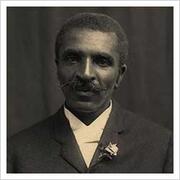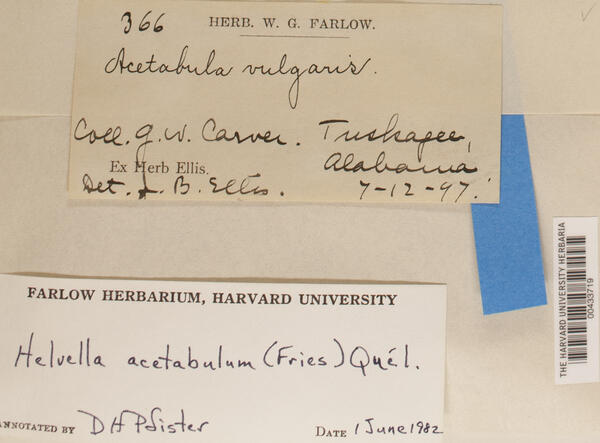
The Harvard University Herbaria (HUH) is home to a number of specimens of fungal plant pathogens collected by George Washington Carver in Alabama and Iowa. George Washington Carver is well known for his promotion of the peanut as an important crop. His curiosity and holistic approach to improving farming also included the study of fungal diseases in plants.
Carver received his bachelor’s degree in 1894 from Iowa State Agricultural College (now Iowa State University). He remained on campus studying plant pathology and mycology under Louis Pammel, earning a master’s degree in 1896. As an undergraduate at Wisconsin, Pammel studied with William Trelease, who was William Gibson Farlow’s first student at Harvard University. Pammel actually started work with Farlow in 1885 but was lured to Washington University in St. Louis by Trelease who was then Director at the Missouri Botanical Garden. Carver and Pammel corresponded for many decades after Carver left Iowa.
Fungal specimens of all types collected by Carver around Tuskegee are described in a Journal of Mycology paper by J.B. Ellis and B.M. Everhardt entitled “New Alabama Fungi” (digitized by the Harvard University Botany Libraries and freely available in BHL). One species is attributed to him as co-author: Sphaeropsis sabaiicola Ellis & Carver. There are two plant pathogens named after him in that publication: Metasphaeria carveri and Colletothrichum carveri.
Carver was active in many aspects of botany, agriculture and social justice. His work on soil science, education, and improving the lives of poor farmers is highlighted in a new blog post from the Biodiversity Heritage Library (BHL). This is the first of many blog posts in 2020 presenting conservation success stories as part of the global Earth Optimism movement.
